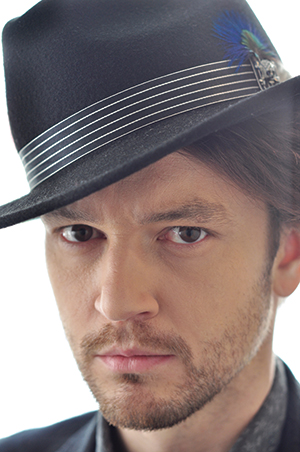 Some people plan out their lives, setting goals for milestones they’d like to reach along the way. For such a person aspiring to be an actor, this would normally involve heading straight to Hollywood, carving out a place in the industry, networking like it’s going out of style, and waiting for a stroke of good luck.
Some people plan out their lives, setting goals for milestones they’d like to reach along the way. For such a person aspiring to be an actor, this would normally involve heading straight to Hollywood, carving out a place in the industry, networking like it’s going out of style, and waiting for a stroke of good luck.
Eric Bossick, however, is not one of those people. Sure, as an aspiring actor he did some time in Hollywood (and to Bossick it felt just like that – something painful and uncomfortable to get out of his system as quickly as possible), but it wasn’t until he left Hollywood that things really started happening for him. Bossick recently scored his dream role – the lead in legendary filmmaker Shinya Tsukamoto’s latest installment of the Tetsuo series. According to the actor, the fact that he could land this role was “inconceivable… It’d be like if some Japanese actor went to Hollywood and turns up as the next Spiderman.” So how did the inconceivable become reality? The only way to understand where Bossick is today is to first look at all the unlikely twists of fate and unsure steps he made along the way.
Born in Pennsylvania in 1973, Eric Bossick left the US at the age of 2, spending his childhood in Singapore and teenage years in Canada. He developed a passion for acting early and often starred in school plays, eventually branching out to the local theater in Calgary, Alberta. Realizing this was more than a passing interest, the aspiring thespian enrolled at the University of Victoria, where he went on to earn his BFA in acting. He then spent a few unsatisfactory years in “Hollywood North,” aka Vancouver, BC. Finding that the city didn’t agree with him, he began to look for an escape route.
As is often the case, it was a chance encounter that sparked Bossick’s initial interest in Japan. One of his roommates was a flamenco guitar player from Tottori, exploring Canada on a working holiday visa. His intrepid spirit inspired Bossick to apply for a working holiday visa in Japan in the hopes of scoring some “life experiences.” At this point, he still planned to return to Vancouver to pursue acting, but fate had other plans in store for him. As soon as he arrived, Bossick felt Japan “from the beginning had changed my life on a deep level. Everyday brought fascinating new experiences, and I became involved with numerous inspiring pursuits” Making use of his tall frame and well-defined features, Bossick easily found modeling and commercial work, delving into Japan’s creative and artistic milieux.
One evening, he happened to attend an Ankoku Butoh performance. Butoh is a genre of Japanese dance that defies easy explanation, but Bossick felt an immediate connection to this form of expression – “I was spellbound by it. It was really, really dark, with a kind of shamanic feel to it… it’s as if you walk into a dark dream when you watch a performance.” Rather than focusing on beats and timed movements, Butoh performers concentrate their efforts on a type of “dancing meditation.” Bossick elaborates, “It’s very elemental… your body is emptied and begins to fill with water, the water begins to feel heavy, water turns to stone, stone to dust.” The dark and “witchy” nature of Butoh appealed to him, and he extended his stay in Japan on a cultural visa, immersing himself in the mysterious world of this avant-garde form of performance art.
After spending several years with the Asbestoskan studio based in Meguro, Bossick felt it was time to move on. He realized that the feasibility of pursuing a career in Butoh was unlikely, and he started searching for other forms of creative expression. He joined forces with other contemporary dancers for a while, and toured with them until a “cataclysm of personalities” led to the troupe’s demise.
It was around this time that he began to branch out into a new medium – still photography. Having worked as a model since coming to Japan, he found himself interested in life on the other side of the lens. He soon scored work on several big-name projects, photographing prominent Japanese musicians. Despite his initial success as a photographer, Bossick was not completely satisfied. It was at this stage – after now having spent 8 years in Japan – that he decided to move to LA to give himself an honest shot at the big time. However, he found the culture shock “insane” and missed Japan “absolutely every day.” Plus, in his time there, he went through a lot of personal struggles, encountering “every cliché you’ve ever heard about Los Angeles.” After three years, he realized that it was time to return to the only place in the world that truly felt like home – Tokyo.
Back in Japan, Bossick resumed modeling, acting, and photography, and soon learned that Shinya Tsukamoto was casting for his next film. A longtime fan of this iconic director, Bossick harassed his agent to ensure a spot at the audition. When promoting the film, Tsukamoto often discusses how Bossick impressed him by showing up for the first audition in white makeup and decked out in full salaryman getup. Bossick shrugs this off nonchalantly, though. “I studied how to be a professional actor, so for me I was only doing what I saw as being professional.” Since the character was supposed to be half-Japanese, he put his knowledge of makeup artistry to good use, chopping off the ends of his eyebrows, darkening his hair, and subtly lightening his skin tone. His preparation wasn’t merely on the surface, though. Bossick says he spent a good 30-40 hours preparing the 4 scenes he was given, creating a full scriptural breakdown, analysis, and character history.
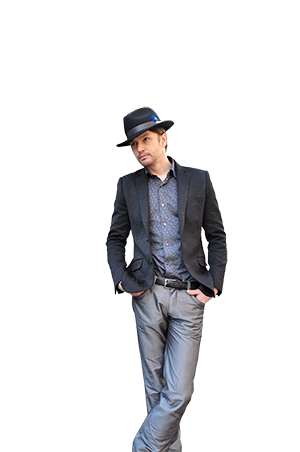 Though I haven’t met Shinya Tsukamoto personally, my impression is that he and Eric Bossick are ideally suited to working together. Bossick is passionately intense and dedicated to his work, taking pleasure in the smallest details, which is also the case for Tsukamoto. Take the audition, for instance. The director chose to hold it not in some bland studio, but out in Saitama in a derelict warehouse, resonating with the metallic and industrial elements of the movie. Realizing the crucial importance of that very first impression, Bossick meticulously planned every detail of their initial meeting. He made calculated clothing and makeup choices to facilitate portraying himself as the character while simultaneously leaving a blank canvas upon which Tsukamoto could project his imagination and creativity. Despite his intense preparation, the actor claims he still felt nervous for the audition, but given some personal struggles he’d been experiencing at the time, he gave himself a rather unusual pep talk, saying to himself, “F**k it. My life is already a Tsukamoto Shinya movie right now. This is my life now, so I have no reason to be nervous… I just need to go in and introduce myself as the person he needs for this role.” Clearly Tsukamoto shared his feelings, since he cast Bossick as the lead in the newest installment of his Tetsuo series.
Though I haven’t met Shinya Tsukamoto personally, my impression is that he and Eric Bossick are ideally suited to working together. Bossick is passionately intense and dedicated to his work, taking pleasure in the smallest details, which is also the case for Tsukamoto. Take the audition, for instance. The director chose to hold it not in some bland studio, but out in Saitama in a derelict warehouse, resonating with the metallic and industrial elements of the movie. Realizing the crucial importance of that very first impression, Bossick meticulously planned every detail of their initial meeting. He made calculated clothing and makeup choices to facilitate portraying himself as the character while simultaneously leaving a blank canvas upon which Tsukamoto could project his imagination and creativity. Despite his intense preparation, the actor claims he still felt nervous for the audition, but given some personal struggles he’d been experiencing at the time, he gave himself a rather unusual pep talk, saying to himself, “F**k it. My life is already a Tsukamoto Shinya movie right now. This is my life now, so I have no reason to be nervous… I just need to go in and introduce myself as the person he needs for this role.” Clearly Tsukamoto shared his feelings, since he cast Bossick as the lead in the newest installment of his Tetsuo series.
Tetsuo: The Bullet Man is the third film in the saga. Hearing Bossick describe both his background and the film itself, it soon becomes apparent just how perfect he was for this role. The basic premise of the story is the trajectory of a man whose son is mysteriously murdered. As he tries to find the killer, his body begins to transform, slowly turning to iron. As his flesh is gradually replaced with metal, he also discovers that he is the product of a scientific experiment gone awry and his anger will expedite the loss of his humanity. The scenes of his transformation, and indeed the entire physicality of the role, give Bossick the perfect platform for displaying his Butoh background. Though he has often vocalized how lucky he was to find himself in this role, he says, “One interviewer said to me, ‘No, what a miracle it was for Tsukamoto to find you, because who else could do this? Who else could live in Japan, understand Japanese culture, speak Japanese, have a background in physical expression that matches Tsukamoto`s world, and really understand his films?’” About having the opportunity to work with Tsukamoto, Bossick says, “it’s kind of like this destiny crossing point.”
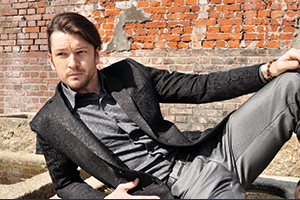 Since the film itself is almost exclusively shot in English, Bossick found himself taking on a key role in revising the script, ensuring that it said what Tsukamoto wanted it to say. He spoke extensively with the director, going over both the original Japanese and English translationsof the script until they were both satisfied with the outcome. Tsukamoto is one of those powerhouse filmmakers who has to be involved in every aspect of the process and has a significant role in the film as “The Guy.” When I ask Bossick about working with this legendary director, he begins with a matter-of-fact “Obviously he’s a genius.” He goes on to elaborate, “he really obsesses on his work and he really lives his work. So the entire time we’re doing a film, it’s as if he lives the film, he lives Tetsuo. There’s not one minute of the day that he’s not thinking about the movie. Even if we stop for lunch or something he sits down to draw the storyboards for future scenes and work out logistics – he’s just constantly in that world.”
Since the film itself is almost exclusively shot in English, Bossick found himself taking on a key role in revising the script, ensuring that it said what Tsukamoto wanted it to say. He spoke extensively with the director, going over both the original Japanese and English translationsof the script until they were both satisfied with the outcome. Tsukamoto is one of those powerhouse filmmakers who has to be involved in every aspect of the process and has a significant role in the film as “The Guy.” When I ask Bossick about working with this legendary director, he begins with a matter-of-fact “Obviously he’s a genius.” He goes on to elaborate, “he really obsesses on his work and he really lives his work. So the entire time we’re doing a film, it’s as if he lives the film, he lives Tetsuo. There’s not one minute of the day that he’s not thinking about the movie. Even if we stop for lunch or something he sits down to draw the storyboards for future scenes and work out logistics – he’s just constantly in that world.”
At press time, the film had debuted in Venice, where it had received a standing ovation in a nearly sold-out theater. I ask Bossick what the reaction has been to the film so far, and he explains, “It is… a very Japanese film in its mentality and in its structure. So I think sometimes Westerners, when they look at it, and they’re completely unfamiliar with Japanese culture… they see people speaking in English and they expect it to be like a Hollywood film, but it’s very, very different.” At the time of writing, the film was scheduled to have its US debut at the Tribeca film festival (an event created by Robert DeNiro) in late April, and was slated for release in Japan on May 22. It will certainly be interesting to see how both foreign and Japanese audiences react to the newest actor to take on the Tetsuo legacy.
So what’s next for Eric Bossick? If he’s learned anything in his life so far, it’s that planning for the future is “futile” and it makes much more sense to let the winding roads of fate align as they will. “Until now, every time I made a plan for my future, it never really worked out, so I don’t plan for the future anymore. I just keep myself open, watch for the right signs, and take the paths of opportunity that present themselves.”
He does admit that he’d like to use the film as a springboard to launch an international career, hoping that it’ll create opportunities for him in Europe and the US: “from this point forward I’m looking to continue to try and make a unique path.” However, he’s also quite sure that Tokyo will remain his home base. “I don’t feel like anywhere else in the world is my home.”
When asked about words of advice to aspiring actors (or indeed anyone trying to follow their dreams), Bossick quotes a scriptwriter who visited his university all those years ago. Though the scriptwriter had been living in LA, he decided to move away and it was at that point that his script had been taken up in a national production. Quoting him, Bossick says, “Go anywhere and do what it is that you want to do, because in the end it will bring you to the same place.” Though when he was a university student Bossick didn’t quite understand the scriptwriter’s words, they now make perfect sense to him – “Where I am now, going to the Venice Film Festival and going to Tribeca, is because I came back to Tokyo, and is because I worked with Tsukamoto Shinya. So my path was totally unique, but it was also going where I wanted and doing what I wanted to do that brought me to where I am now.”
Story by Melissa Feineman
Photos by Daisuke Takahashi
From J SELECT Magazine, June 2010



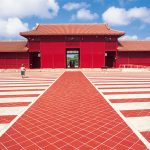

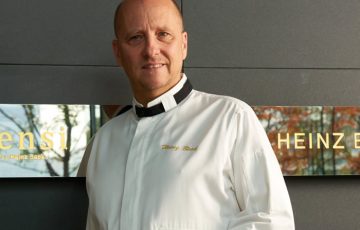
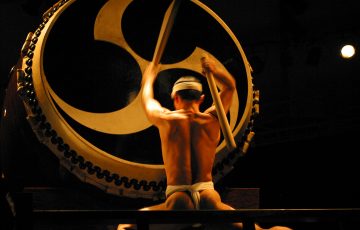
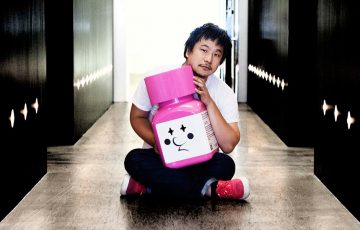
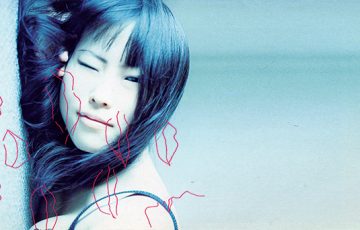
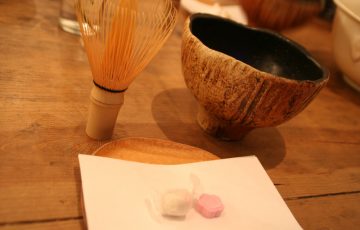
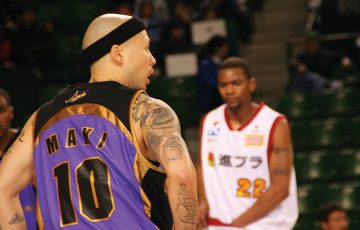
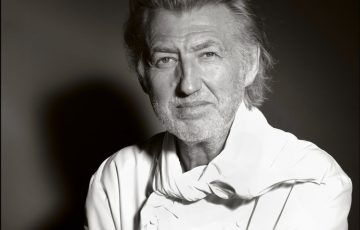
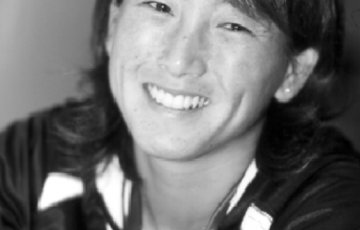


Recent Comments